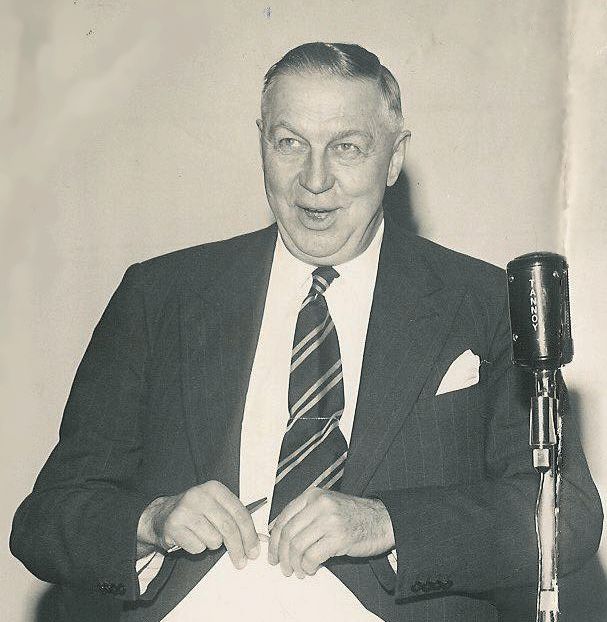Arthur Clifford Howard
Arthur Clifford Howard (1893-1971), inventor, was born on 4 April 1893 at Crookwell, New South Wales, eldest son of John Howard, farmer, and his first wife Mary Ellen, née Smith. After attending schools at Crookwell and Moss Vale, he studied engineering through a correspondence course while an apprentice at Moss Vale.
Encouraged by his father, who had brought the first steam tractor to Gilgandra where he had taken up a property, Howard began in 1912 experiments in rotary tillage which culminated in his invention of the rotary hoe. Using various pieces from farm machinery, he rigged a drive from the tractor engine to the shaft of a one-way notched disc cultivator. He found that the ground could be tilled without the soil-packing that occurred with normal ploughing. But the fast-spinning discs threw the soil sideways until he developed an L-shaped blade mounted on widely spaced flanges fixed to a small-diameter rotor.

Howard, with a fellow apprentice, Everard McCleary (d.1918), established a company to manufacture rotary hoe cultivators, but soon found that there was little demand for their small model. Work on a larger model was interrupted by World War I. Unfit for active service, Howard went to England under a scheme initiated by (Sir) Henry Barraclough to work on munitions and aircraft engines.
Unable to interest English agricultural implement firms in his ideas, Howard returned to Moss Vale in 1919. Next year he tested and patented his rotary hoe cultivator. It consisted of a main frame carrying an internal combustion engine and a subsidiary frame carrying five rotary hoe cultivators.
In March 1922 Howard formed a syndicate, Austral Auto Cultivators Pty Ltd. The firm moved to Northmead, Sydney, in 1927. He continued to develop his ideas, building models to suit particular terrains and types of farming, a rotavator to fit a Fordson tractor and several types of hand-controlled machines. His DH22 tractor, designed in 1927 to work with rotary hoes, initiated the first large-scale production of tractors in Australia.
Despite reduced sales during the Depression, Howard raised new capital for the company, now known as Howard Auto Cultivators. Finding it difficult to meet overseas demand stimulated by a successful export drive, he arranged a ten-year licence with an English firm to make his machines for markets outside Australia. In 1937 unauthorized design alterations took Howard to England where the licence was terminated. He returned briefly to Australia to resign his position of managing director at Howard Auto Cultivators and in July 1938 formed an English company, Rotary Hoes Ltd, which established branches in the United States of America, South Africa, Germany, France, Italy, Spain, Australia and New Zealand. It later became a holding company for a wholly owned subsidiary, Howard Rotavator Co. Ltd, to which it transferred the manufacture and distribution of rotavators, manure spreaders, trench diggers and soil stabilization machinery. The company received the Queen's award to industry in 1966.
Howard had married Daisy May Hayes at the Methodist Church, Moss Vale, on 19 September 1925. After moving to England, they lived at Upminster, Essex. A determined, quiet but outgoing man, devoted to his family, Howard was a practical engineer who combined business acumen with vision and outstanding inventive ability. As well as being managing director of Rotary Hoes Ltd until 1970, he was a director of G.D.H. Ltd, Harleston Industries Ltd, Howard (Forge & Foundry) Ltd and Howard Rotavator Co. Ltd. In 1970 he was appointed C.B.E. He died on 4 January 1971 at Harold Wood Hospital, Essex, leaving an estate in England valued for probate at £111,476. He was survived by his wife, two daughters and a son, who became managing director of Howard Rotavator Pty Ltd in Australia.